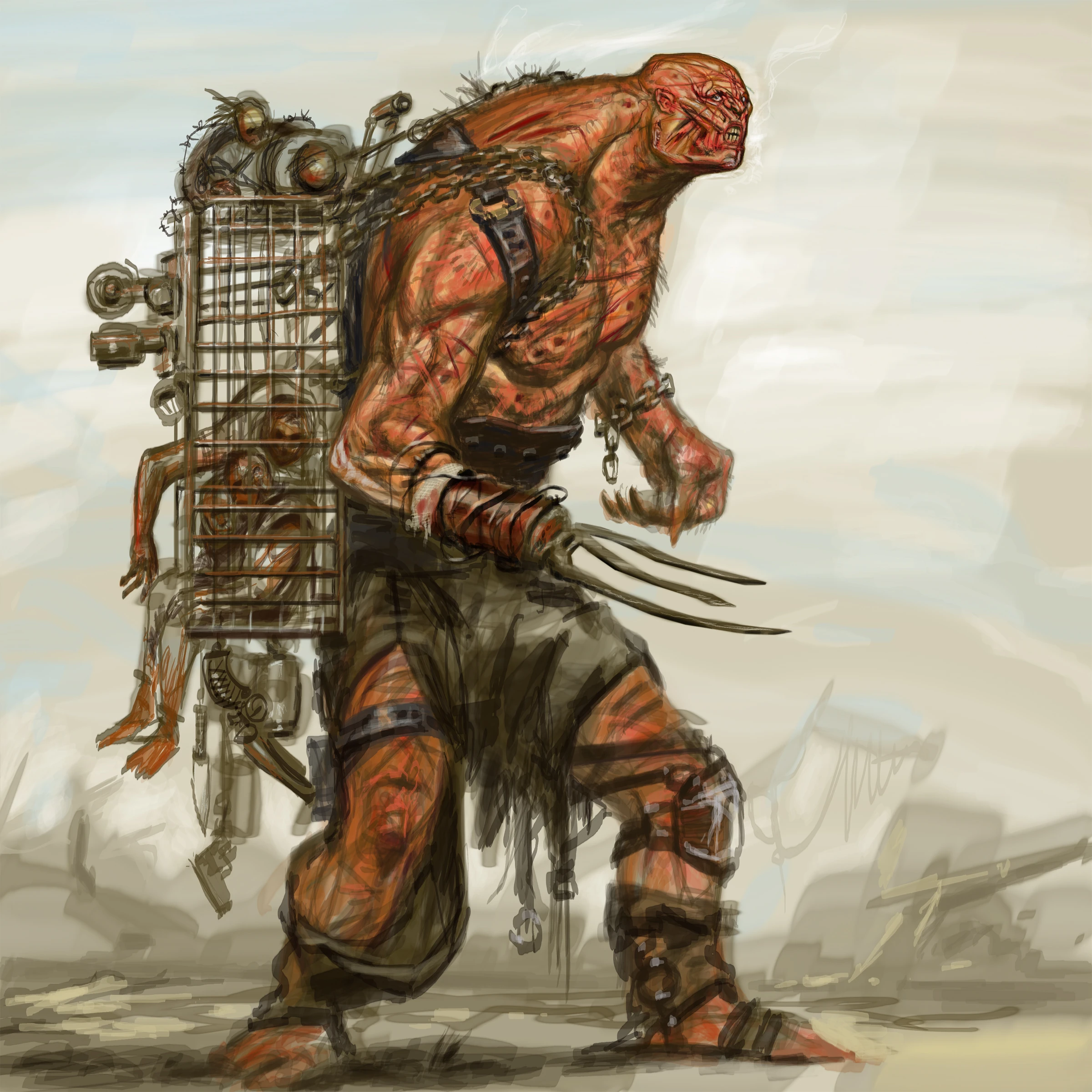Building Blanks pt. 1: The art of NPC Construction
For this post I wanted to try something different. I wanted to focus on one of my favorite things to finish but one of my least favorite things to do, NPC creation. I know it might sound odd, but the process of making characters in my experience is always a long, cumbersome experience. There's concepting, researching the mechanics I need to get it to work, cross referencing... the whole thing can be a pain. That said, I know I'm not the only one who gets anxious at the thought of building new characters, so I'm going to share my process with everyone here, and see if it helps.
So, today I'm going to build some Blanks, NPCs that are not so much unique individuals but rather unnamed characters meant to fill in the rolls that you need during a given session. These are the unnamed bandits on the side of the road helping your king of thieves, the apprentices helping your wizard, the cavalry teams chasing you down. These guys don't have names, but they've got solid design mechanics built around a central theme that work and are fun to play as a GM and potentially terrifying to witness as a player. So without further adeu lets get started.
Step 0: Rules
So, before we begin I want to lay down some of the ground rules I have for myself that I follow when building anything. The list is short, but I think all of it is important.
So, today I'm going to build some Blanks, NPCs that are not so much unique individuals but rather unnamed characters meant to fill in the rolls that you need during a given session. These are the unnamed bandits on the side of the road helping your king of thieves, the apprentices helping your wizard, the cavalry teams chasing you down. These guys don't have names, but they've got solid design mechanics built around a central theme that work and are fun to play as a GM and potentially terrifying to witness as a player. So without further adeu lets get started.
Step 0: Rules
So, before we begin I want to lay down some of the ground rules I have for myself that I follow when building anything. The list is short, but I think all of it is important.
- Don't make them too narratively complicated: This is meant to be a blank, a design that can fill a lot of roles or places in a story because something (character, encounter, etc.) needs some goons and these guys fill that role.
- They need to be fun: Whatever I build needs to not only be fun to take on as a PC but fun for the GM to play. This can be an interesting style, a cool mechanic, or some cool item, but it needs to be engaging and entertaining.
- They need to be quick to understand and "quick" to play: Blanks are built to fill a niche in the campaign world, be it a specific role in a culture, a feared organization in the world, or something silly the gnomes built. To that end, whatever I build should be something I can look at, and go, "Okay, I get this" and remember how the hell it works or what it's supposed to do. Now, mechanically, it doesn't have to be as quick as that. Mechanics and their interplay are often less intuitive than a narrative concept, but I should be able to look at my stat line or the strat write-up and be able to catch on to what I'm supposed to do.
Step 1: The Concept
For this build, I'm going to work on something that's been puttering around in my head for probably over a year but I haven't had a reason to build it: Ogrekin Battle Cattle.
Ogrekin Battle Cattle are the feared cavalry line of the Ogrekin raiders in my home setting, angry Ogrekin who've taken to capturing young cattle from others and then training them into heavy cavalry built to carry the tiny giants into combat, and with their deadly cavalry charges are a force to be reckoned with.
So think this...
Riding on this...
...And you can see how this is going to go. It's like a hillbilly Warboy on a Holstein. It's silly looking, but with Ogrekin's Str and Spirited Charge these things should be terrifying in the opening charge. So now I've got the concept, lets lay it out, and in next post I'll show you guys how it's come together.



Comments
Post a Comment